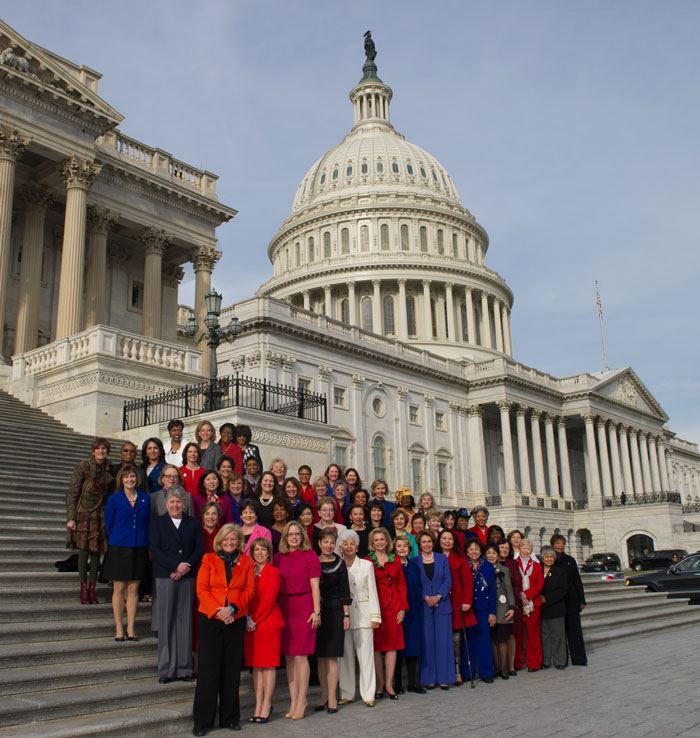Momentum is Building
The 2014 midterm elections proved to be remarkable for the Republican party. Regardless of your politics, this election went down in both recent and not-so-recent history. America voted Republican governors into deep, deep blue states like Illinois, Maine, Maryland, and Massachusetts. We voted Republicans into the majority in both the U.S. Senate and House of Representatives. And, we voted Republican majorities into 69 of the 99 state legislative chambers across the country, an all-time Republican high—our previous high point was 64 chambers in 1920.
From my perspective, though, the most remarkable outcome of 2014 is the fact that America voted 100 women into our nation’s Congress for the first time in U.S. history. And, further, that a solid slate of Republican women candidates contributed to this result.

While it’s true that Republican women historically have a difficult time clearing the primaries in the race for higher office, five women defied the odds in the 2014 midterms. U.S. Senators-elect Shelley Moore Capito of West Virginia and Joni Ernst of Iowa are the first female senators (of either party) from their respective states. In addition, we have U.S. Representatives-elect Barbara Comstock of Virginia, Mia Love of Utah, and Elise Stefanik of New York. Their races will prove instructive for Republican women running in years to come.
What’s interesting about these Republican stars is this: all five were able to clear the hurdles of infrastructure and indifference that so often stymy female candidates. All five women were able to raise the hefty funds necessary to be competitive in their races, and they did so handily. I’ve written before that money is a “necessary evil” in this game of politics. It was true yesterday and it’s true today, but that’s our political reality—to be successful, women must meet the fundraising challenge.
All five women also overcame the structure and electorate of the Republican party, which has strong proclivities towards putting up and electing male candidates. These women proudly said, “I am a woman, I am competent, and I am not going away.” In Iowa, Joni Ernst—a self-described Harley-riding woman who knows the “biscuit line at Hardee’s”—would not back down, even though her state had never elected a female Senator. In New York, 30-year-old Elise Stefanik became the youngest woman ever elected to the U.S. Congress. And in Utah, Mia Love—a mother and previous failed candidate—refused to take no for an answer and will now be the first black Republican woman ever to serve in the U.S. Congress.
2014 was a good year, indeed.
In addition, an under-reported story in the 2014 election cycle is the fact that all three incumbent, female Republican Governors were re-elected in their states: Governor Mary Fallin of Oklahoma, Governor Nikki Haley of South Carolina, and Governor Susana Martinez of New Mexico. Their reelections speak to their leadership, diligence, and capabilities. They are models for women across the nation aspiring to run.
Finally, I would be remiss to not mention all of the female Republicans elected statewide in this cycle as lieutenant governors, secretaries of state, and attorneys general across the United States:
| Candidate Name | Position | State |
|---|---|---|
| Kay Ivey | Lt. Governor | AL |
| Leslie Rutledge | Attorney General | AR* |
| Cynthia Coffman | Attorney General | CO* |
| Pam Bondi | Attorney General | FL |
| Evelyn Sanguinetti | Lt. Governor | IL* |
| Kim Reynolds | Lt. Governor | IA |
| Mary Taylor | Lt. Governor | OH |
| Rebecca Kleefisch | Lt. Governor | WI |
| Connie Lawson | Secretary of State | IN |
| Ruth Johnson | Secretary of State | MI |
| Shantel Krebs | Secretary of State | SD* |
| Karyn Polito | Lt. Governor | MA* |
| Barbara Cegavske | Secretary of State | NV* |
| Michele Reagan | Secretary of State | AZ* |
| Dianna Duran | Secretary of State | NM |
| * Newly elected | ||
Yes, 2014 was a good year for Republican women.
That said, we still have a long way to go towards achieving a truly reflective democracy. While these gains are worth celebrating, in such a strong electoral season for Republicans, more GOP women candidates running and surviving their primaries would have raised the number of women serving even more. There’s a lot of work left towards the goal of parity in higher office, and we can’t relent now. Momentum is building.
